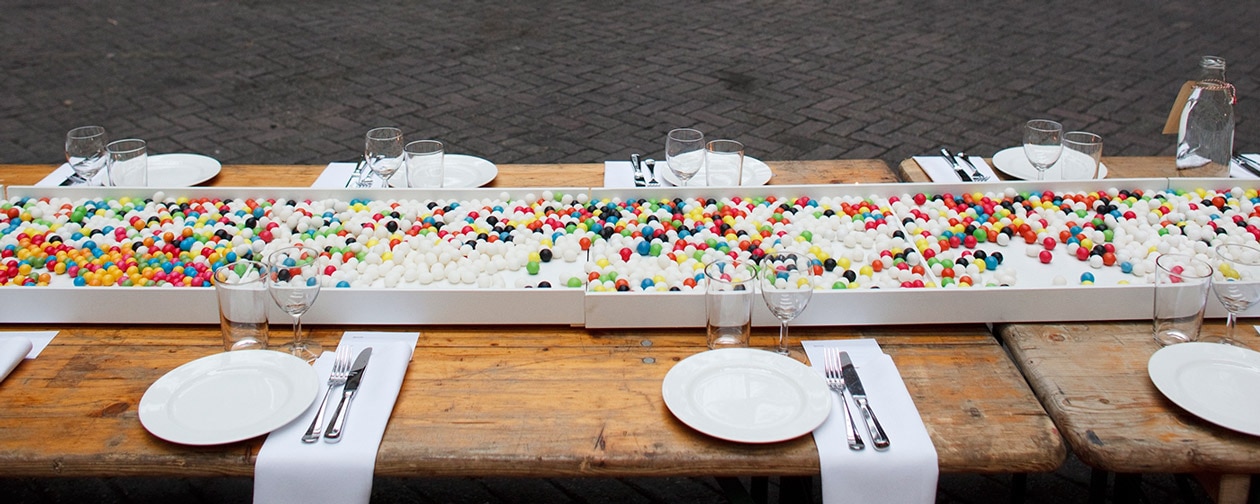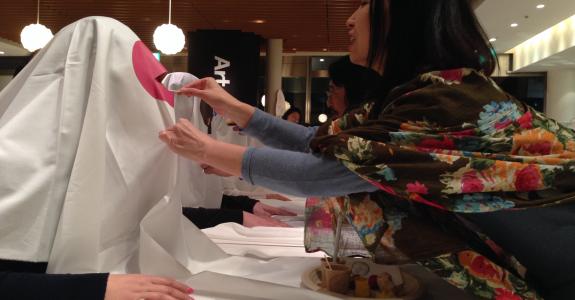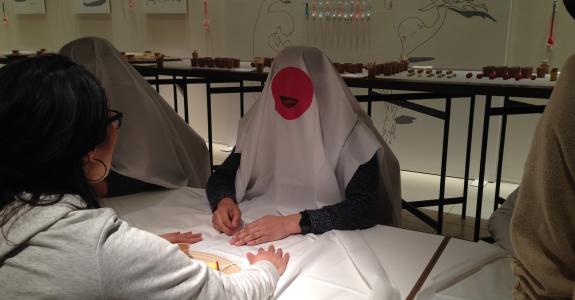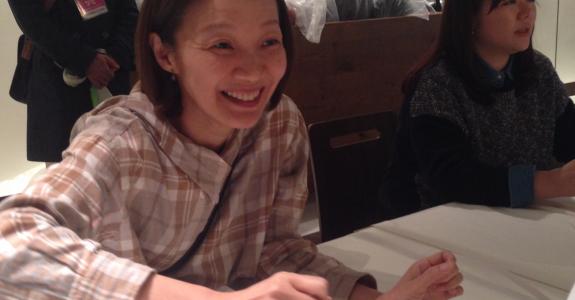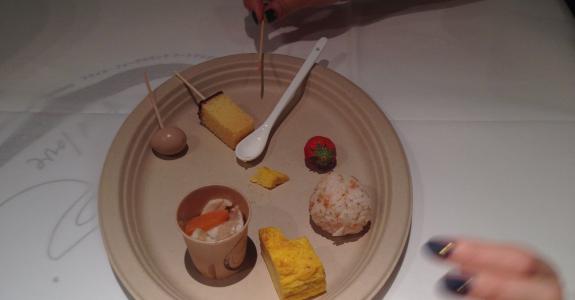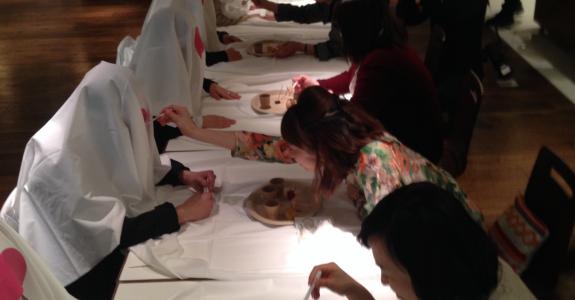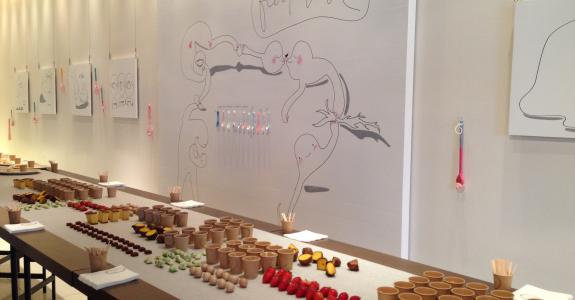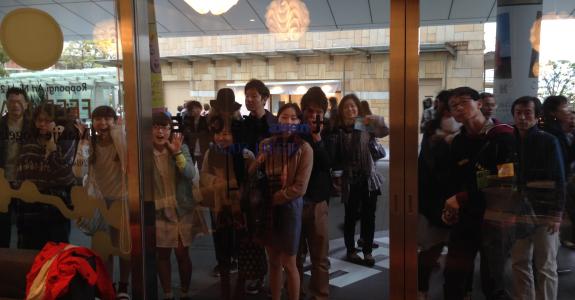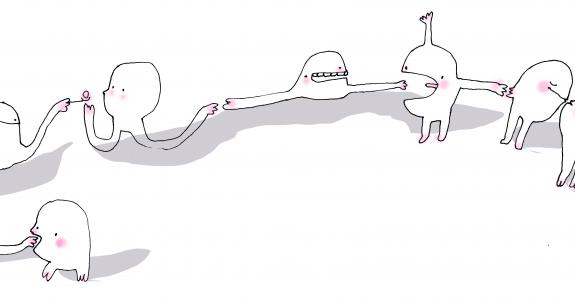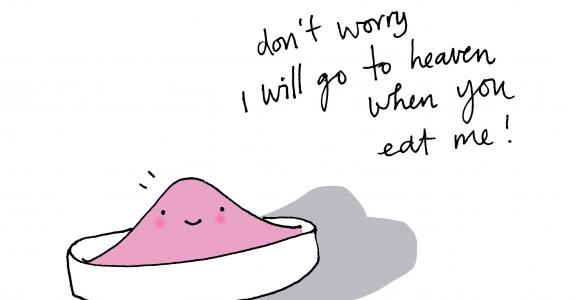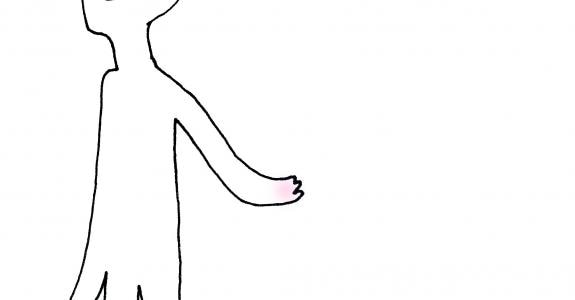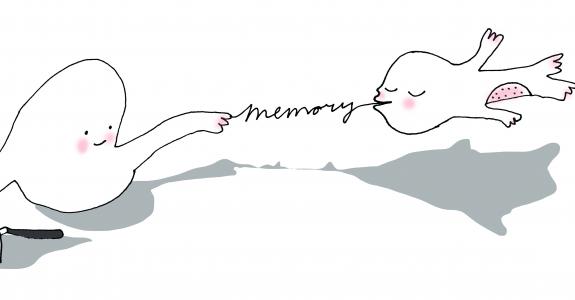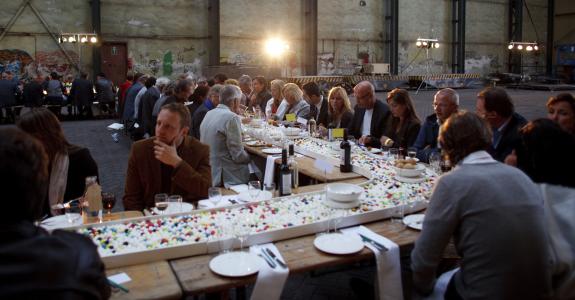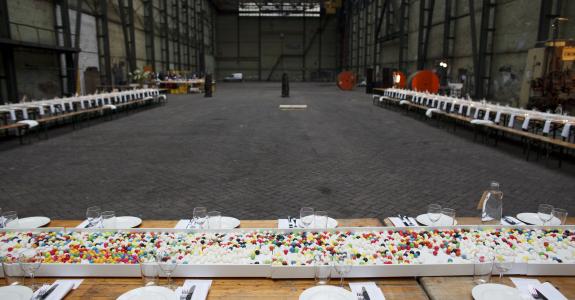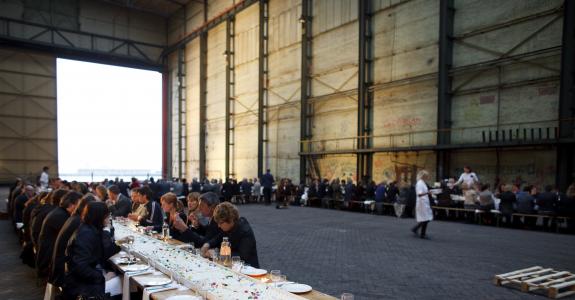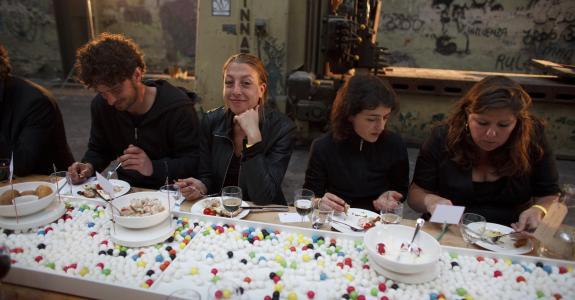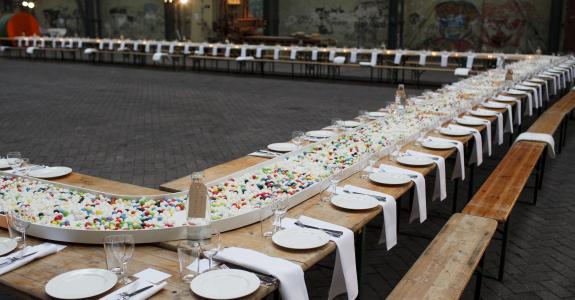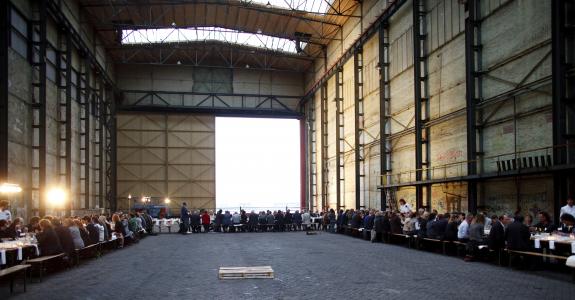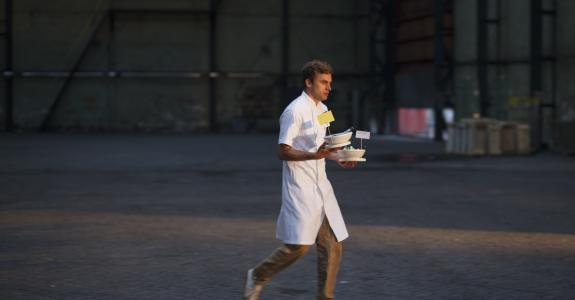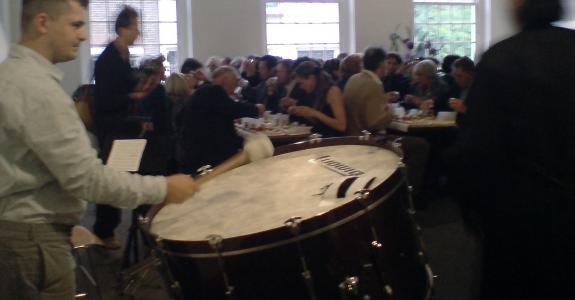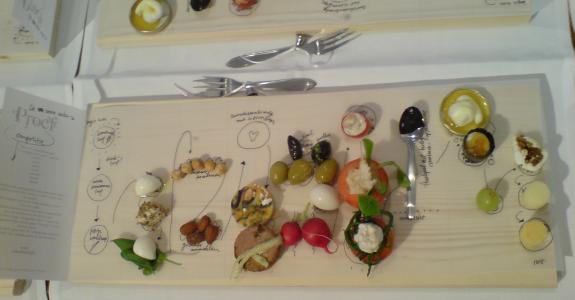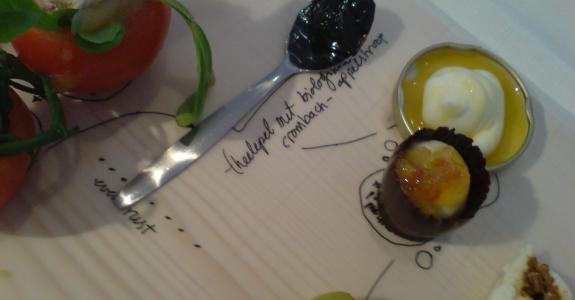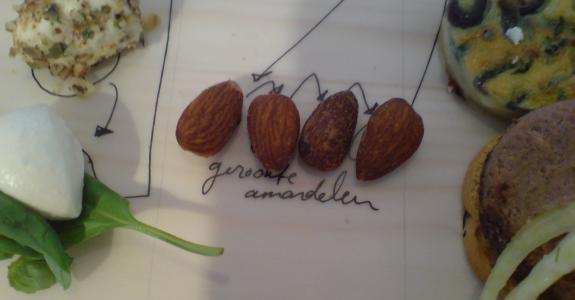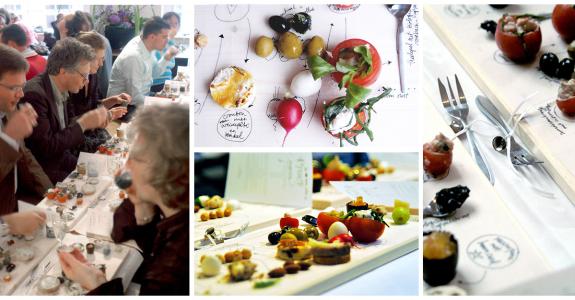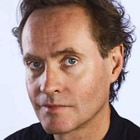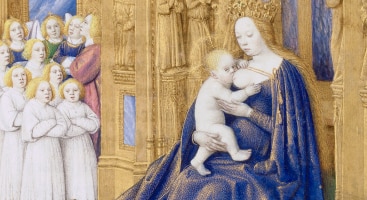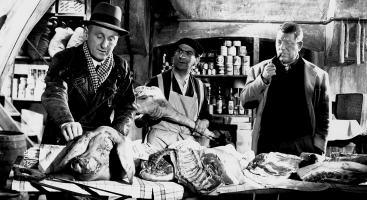Eating design
Designer Marije Vogelzang works with food. She does not create new products, but unusual eating situations.
Andreas Kohli spoke with Marije Vogelzang
Imagine sitting under a tablecloth, completely covered except for a hole in the fabric where your mouth is. Blindfolded and knowing that a stranger will be feeding you. You can hear the stranger’s voice when he or she softly taps you on your shoulder, speaks to you in a gentle voice, confiding a personal story about past memories of food and flavours, and textures and emotions. From time to time, the stranger will feed you little bits of the food he or she is talking about. You taste the food and the stories at the same time. The only thing you need to do is to sit, relax and absorb the details of the other person’s life.
When the session is over the stranger will gently tie a ribbon around your wrist. After the tablecloth and blindfold are removed you look around. The person feeding you has disappeared. You look at your wrist and read on the ribbon: “You have been fed by……” A souvenir with the name of the person that has fed you. Now it’s time to change position and feed someone yourself. What would be your story?
You have done similar events in Copenhagen and St. Petersburg, what was the challenge with Japan?
“Feed-Love Tokyo” was a next step, a further development of the concept. I thought it was a great challenge to see how it would go in Japanese culture. I was very nervous to see if the participants would actually collaborate in the experience – and they did so well!
What is the aim of your art project?
Feeding is a very intimate thing. It is something that, after early childhood, rarely happens to you until you get old and disabled. In your childhood it is connected with love and security (if all is well), and that’s how you might also see it between lovers. When someone needs to be fed due to a disability, it is often connected to vulnerability and power. Psychologically it’s a fascinating act. Connecting feeding to an exchange of stories is adding something to the experience. It connects food to food memories such as happened many times in childhood as well. So we offered an assortment of typical Japanese soul food and children’s favourites to stimulate the possibility of facilitating food memories.
In many of your works you use a visible border between the people who feed and are fed. It is sometimes a cloth or veil, and sometimes a blindfold that blocks vision. What role does this play in the ambience you create?
I intuitively use such veils. If we would look each other in the eyes right now, I could not feed you because it would make you and me feel very awkward. If we can't see each other, we can kind of relax. I think I am just trying to interfere with feeling safe: you feel safe when you're under something and you think nobody can see you. It's like when you lie in your bed and it's really hot outside: you would still like to have a very thin blanket, not because you're cold – you could also lie there without it – but because it makes you feel secure, because it touches you a little bit, and this contact makes you feel OK.
You describe yourself as an eating designer, what is the difference to a food designer?
A food designer designs food. I think food is already perfectly designed by nature. I design experiences based on the act of eating.
How did you become an eating designer?
I didn’t plan it or anything. When I was a student at the Design Academy I wanted to become a designer and designers at that time (15 years ago) never thought about doing something serious with food. Which I think is funny, food shapes the world, food is essential to us all.
Anyway, I didn’t realize that then. I just started to work with food because I liked it. I was interested in the emotional impact of food and at a time when conceptual design was developing there was room for me to develop this new field of design. The notion of “eating design” grew organically. It took me years to understand the power of eating and design. Every time I explore it I discover new angles.
I love your illustrations, they are very humorous and light.
I like to draw and it helps me to communicate an idea or a thought.
Some of your works are very playful and communicative, for example “Bits ‘n Bytes”. What is your main focus in this project? The design (it looks beautiful), the sensuality of eating or for people to start communicating?
Yes, most of my designs are multi-layered. The looks are part of the whole experience but never the most important aspect of the design. The actual design is in what people do with it.
For the Museum Boymans van Beuningen, Marije Vogelzang created a huge low-tech conveyor belt where little balls of food were moved by the participants and made them interact while they ate.
Like in the project “Eating on the beat”. How does the design and music change the perception and taste of food?
The interesting part of this project is actually that everybody (40 people in this case) took the same little bites at the exact same time. So it was a kind of simultaneous eating experience that was very strong. The drum was very powerful and you could feel it in your belly. One woman was very touched by this experience and came to me afterwards crying and telling me that she had never had such an intense eating experience before. (Smiles) But most of all it was just a lot of fun and kind of hilarious.
A dish is a composition. Tastes are musical notes. Combining them and giving them space and rhythm creates a “musical masterpiece” inside the mouth. Dictated by a big drum, the guests eat little bites in a certain order.
What do you think will be the major challenges of the coming years for you?
I just started a new position as the head of a new bachelor course on food and design at the Design Academy in Eindhoven. I am very enthusiastic about the idea of training a new generation of designers to consider food their topic. This needs to become a serious field of design since food-related issues in the world are growing and getting more serious. We need creative minds for that.
What is your message or mission?
I would like to show everybody that we need to value the food we eat and that we can use food to connect with others. I would like to tickle people’s imagination to think of food in a different way and use creativity to celebrate food more.



